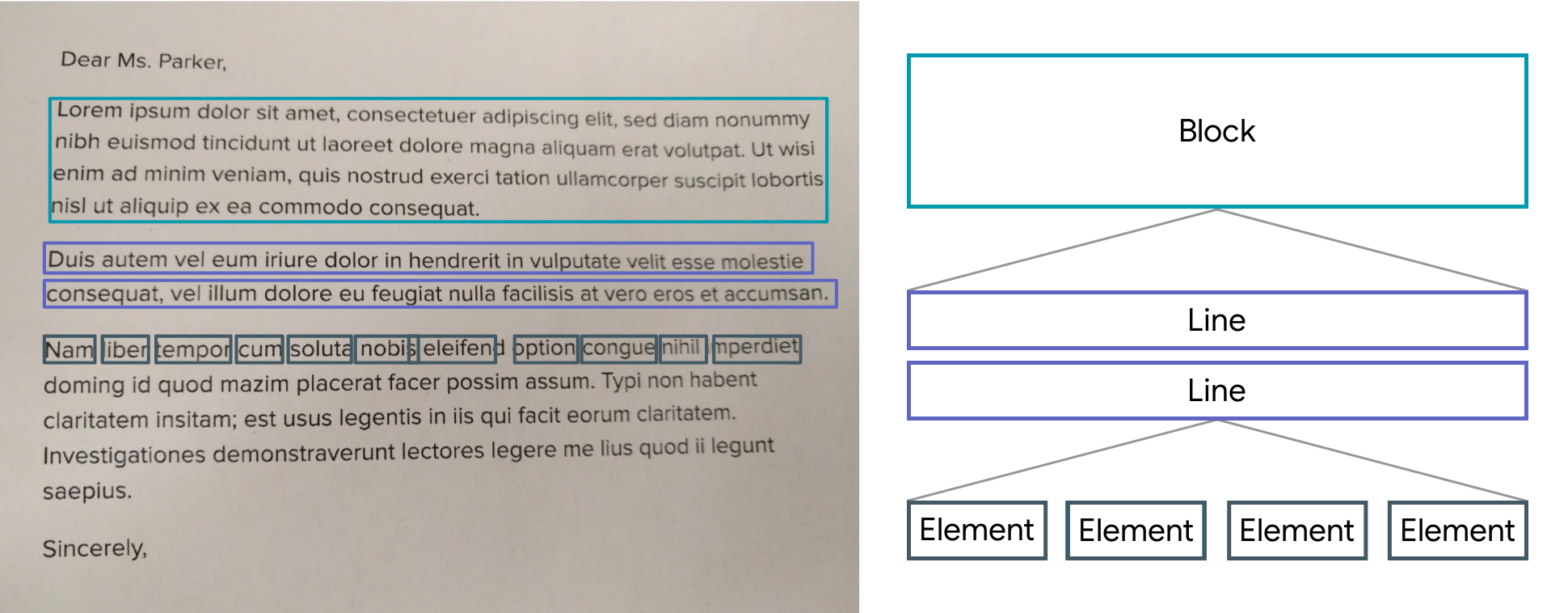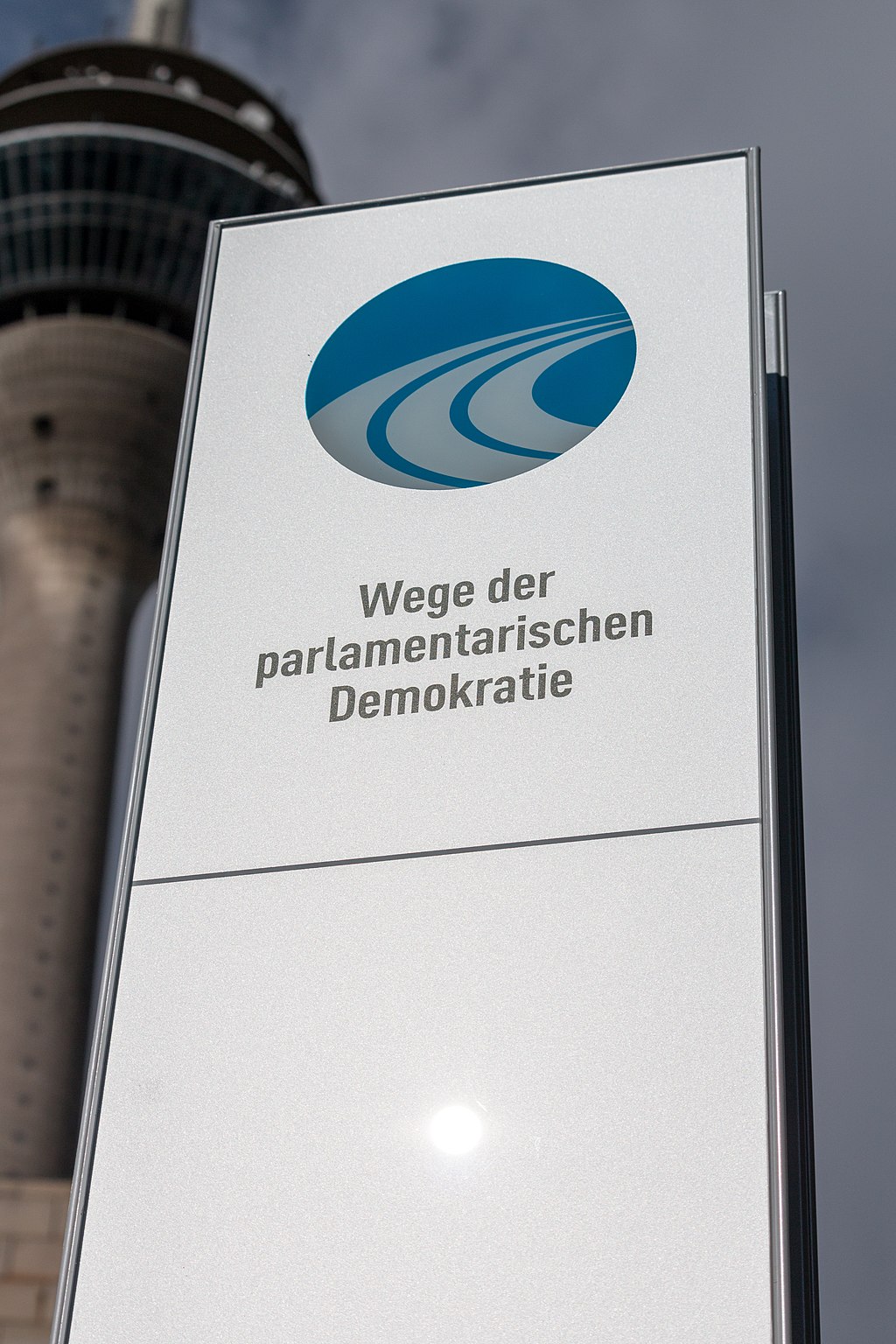
Interfejs ML Kit Text Recognition v2 rozpoznaje tekst w dowolnym zestawie znaków w językach chińskim, dewanagari, japońskim, koreańskim i łacińskim. Interfejs API może również służyć do automatyzacji zadań wprowadzania danych, takich jak przetwarzanie kart kredytowych, rachunków czy wizytówek firm.
Najważniejsze funkcje
- Rozpoznawanie tekstu w różnych alfabetach i językach Obsługa rozpoznawania tekstu w językach chińskim, dewanagari, japońskim, koreańskim i łacińskim
- Analizuje strukturę tekstu Umożliwia wykrywanie symboli, elementów, wierszy i akapitów.
- Określ język tekstu Określa język rozpoznanego tekstu.
- Rozpoznawanie w czasie rzeczywistym: rozpoznaje tekst w czasie rzeczywistym na wielu różnych urządzeniach
Struktura tekstu
Moduł rozpoznawania tekstu dzieli tekst na bloki, linie, elementy i symbole. Ogólnie rzecz biorąc:
Blok to sąsiadujący się z nimi zestaw wierszy tekstu, np. akapit lub kolumna,
Linia to sąsiedni zestaw słów na tej samej osi,
Element to ciągły zestaw znaków alfanumerycznych („słowo”) na tej samej osi w większości języków łacińskich lub słowo w innych
Symbol to pojedynczy znak alfanumeryczny na tej samej osi w większości języków łacińskich lub znak w innych językach.
Na ilustracji poniżej pokazujemy przykłady każdej z tych opcji w kolejności malejącej. Pierwszy wyróżniony blok w kolorze turkusowym to blok tekstu. Drugi zestaw wyróżnionych bloków (kolor niebieski) to Wiersze tekstu. Trzeci zestaw wyróżnionych bloków, ciemnoniebieskich, to Words.

W przypadku wszystkich wykrytych bloków, linii, elementów i symboli interfejs API zwraca ramki ograniczające, punkty narożne, informacje o rotacji, wskaźnik ufności, rozpoznawany język i rozpoznany tekst.
Przykładowe wyniki

Zdjęcie: Dietmar Rabich, Wikimedia Commons, "Düsseldorf, Wege der parlamentarischen Demokratie -- 2015 -- 8123", CC BY-SA 4.0
| Rozpoznany tekst | |
|---|---|
| Tekst | Wege der parlamentarischen Demokratie |
| Bloki | (1 blok) |
| Blok 0 | |
|---|---|
| Tekst | Wege der parlamentarischen Demokratie |
| Ramka | (296, 665 – 796, 882) |
| Punkty narożne | (296, 719), (778, 665), (796, 828), (314, 882) |
| Rozpoznany kod języka | de |
| Linie | (3 wiersze) |
| Wiersz 0 | |
|---|---|
| Tekst | Wege der |
| Ramka | (434, 678, 670, 749) |
| Punkty narożne | (434, 705), (665, 678), (670, 722), (439, 749) |
| Rozpoznany kod języka | de |
| Wskaźnik ufności | 0,8766741 |
| Stopień obrotu | -6,6116457 |
| Elementy | (2 elementy) |
| Element 0 | |
|---|---|
| Tekst | Wege |
| Ramka | (434, 689, 575, 749) |
| Punkty narożne | (434 705), (570, 689), (575, 733), (439, 749) |
| Rozpoznany kod języka | de |
| Wskaźnik ufności | 0,8964844 |
| Stopień obrotu | -6,6116457 |
| Elementy | (4 elementy) |
| Symbol 0 | |
|---|---|
| Tekst | Ś |
| Ramka | (434, 698, - 500, 749) |
| Punkty narożne | (434, 706), (495, 698), (500, 741), (439, 749) |
| Wskaźnik ufności | 0,87109375 |
| Stopień obrotu | -6,611646 |

